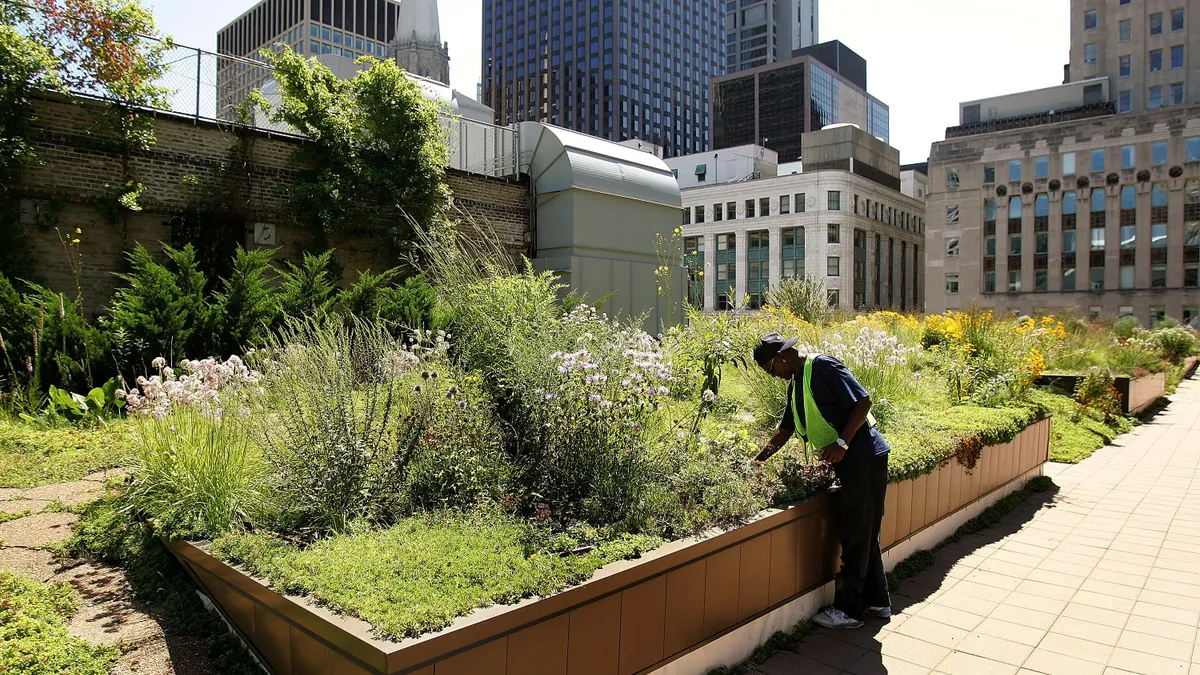U.S. communities are striving to keep pace with climate change impacts, and a new analysis of public agencies’ climate resilience and adaptation plans shows just how varied those efforts are.
Researchers at the nonprofit Regional Plan Association combed through 54 of these plans to “offer important examples of progress and innovation and success stories for communities in their adaptation planning journey,” the April 22 report says. It comes after the federal government’s national climate assessment warned last year that current adaptation efforts are insufficient to meet the dangers posed by climate change.
The RPA analysis sheds light on which adaptation actions are getting the most attention, at least among the plans examined. Nature-based approaches to reducing flood risk, particularly those that focus on ecological restoration and conservation, made up the largest number of adaptation strategies across the plans. The 54 plans analyzed included a total of 808 strategies that use natural and nature-based responses, from increasing tree canopy to building green infrastructure.
This marks a shift in the resilience world, according to RPA. “Perhaps 10 years ago, our findings would have reflected more conversations about sea walls and other gray infrastructure practices,” Rob Freudenberg, RPA’s vice president of energy and environment, said in a statement.
Despite the growing prevalence of nature-based strategies, the report says that communities still need a better understanding of their costs and benefits, especially the community benefits that aren’t easily represented by a dollar amount. One recent paper by Boston University researchers found that, compared with efforts that drive down greenhouse gas emissions, local adaptation projects are “perceived as ‘not bankable’ or lacking a ‘clear business model.’”
The RPA report also examines local plans to retreat or relocate communities and infrastructure away from risky areas, a concept that has sparked controversy in many places. Retreat and relocation strategies made up the fewest number of total adaptation strategies examined, with 96 across the 54 plans.
The report finds that the largest number of retreat and relocation strategies fall under the “development controls and incentives” category, which describes actions that penalize development in high-risk areas and encourage it in low-risk regions through levers like expedited permitting. RPA hypothesizes that these actions are easier to gain buy-in for and cost less than other paths.
Government buyouts of at-risk properties, which aim to help people relocate somewhere safer, were the second-most mentioned strategy type in the retreat and relocation category. RPA pointed to an innovative idea for buyouts in Houston’s resilience plan that would allow participants to undergo an expedited process and swap for a property in a lower-risk region within the same community.
RPA also found that most plans had a dedicated section to outline potential funding sources for adaptation projects. Those sources include federal grant dollars, municipal budgets, green bonds, special financing districts, carbon credit programs and private investment dollars.
Plans also varied in how they accounted for equity. “While some plans have dedicated chapters for equity and justice, others have equity-related actions under each goal or objective,” the report says. “Some plans also prioritize equity more than the others, with some considering equity as an additional aspect but not a central priority, while others make it an integral part of all aspects of their plan.”












